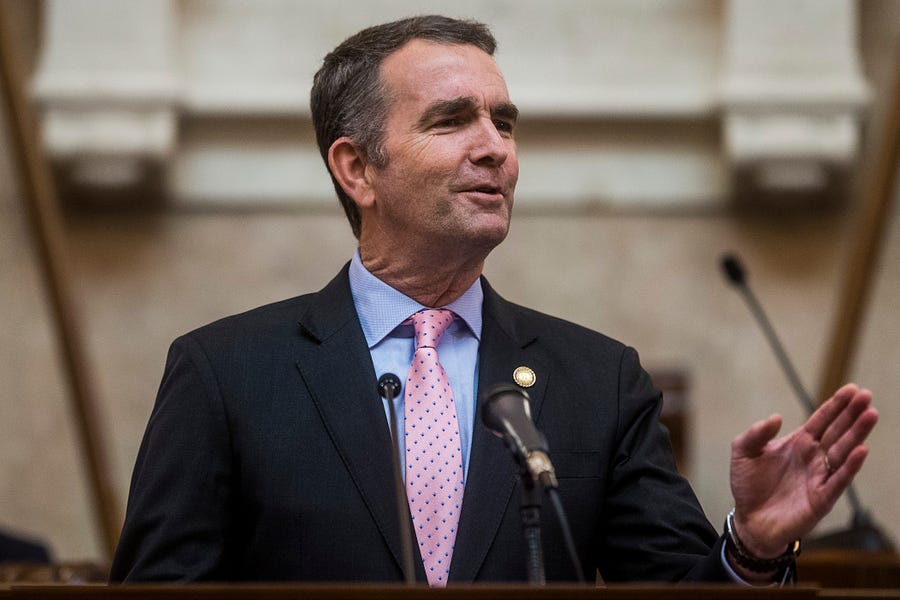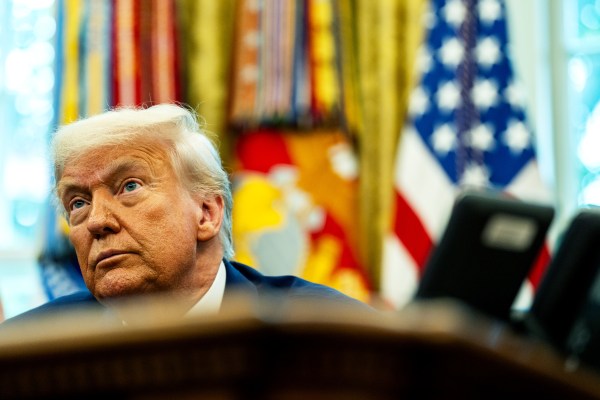I don’t know about y’all, but I’m over 2020. I know we only have a few more days left, but I’m not sure I can make it. And—just like at the beginning of the year—I’m back to hunting for the good toilet paper which is sold out in every store within an hour of my house. Not cool, 2020.
With that in mind, I thought we would look ahead this week. To 2021!
But first …
Campaign Quick Hits
Trump Country: In my list of counties to watch on Election Night, I included Robeson, NC. And it didn’t disappoint as a bellwether of which way North Carolina was headed that night. As Michael Kruse wrote this week, Robeson “voted for Trump in 2016 at an eye-popping clip of 67 percent and then upped that last month to a yet more astonishing 81.”
But that’s not why it’s interesting. “By land mass, Robeson’s the largest county in North Carolina, only a tad smaller than the whole of Rhode Island. It is one of this state’s poorest counties, and one of its least educated. Its population of some 130,000 people is also, though, one of the most broadly diverse in the nation—42.3 percent American Indian, 30.6 percent white, 23.6 percent black, with a growing Hispanic presence as well.” This Politico piece is worth the read as a deep dive into one set of unusual Trump voters in 2020.
Election Litigation Update: As you probably noticed by now, the Supreme Court on Friday night said “naw dawg” to the lawsuit filed by Texas Attorney General Ken Paxton. Justices Sam Alito and Clarence Thomas included their own statement with the order (not a dissent!) saying that while they interpret Article III of the Constitution to require the Supreme Court to accept the case, they also would have dismissed it for other reasons. So it was 9-0 on the merits of the case; the only dispute was whether the Court should have accepted it first and then dismissed it or refused to accept it in the first place.
Then, on Saturday, a Wisconsin federal district court dismissed another case brought by the campaign, but did so in a really stellar opinion that discussed what “manner” really means in the Electors Clause, which has been at the center of a lot of the pro-Trump legal theory. Article II, Section 1, Clause 2 of the US Constitution says that “Each State shall appoint, in such Manner as the Legislature thereof may direct a Number of Electors….” But this judge argued that ‘manner’ meant, in this case, by the popular vote of the state and had nothing to do with the rules and regulations over absentee ballots, drop-off boxes, and the like. And then, yesterday, the Wisconsin Supreme Court rejected yet another case.
In the end, this weekend was like a freshman boy asking girls to prom—a lot of rejection! For a deeper dive into the law (and several digressions into abstention doctrine and how to take the LSAT), check out yesterday’s Advisory Opinions podcast here.
What Happens Next: As with Safe Harbor Day last week (an official Sweep holiday), we have the Electoral Count Act of 1877 to guide us as to what happens now. Yesterday, per statute, the electors of the various states met to vote for President and Vice President. They now send those votes to the Senate. From there, “on the sixth day of January … the Senate and House of Representatives shall meet in the Hall of the House of Representatives at the hour of 1 o’clock in the afternoon on that day, and the President of the Senate shall be their presiding officer.” I guess someone back in 1877 knew they didn’t want to trudge into work early on a cold January morning.
But then we get to objections—of which we may have a few this time around, thanks to an effort led by Rep. Mo Brooks of Alabama. But he needs a friend in the Senate to make this work. “Upon such reading of any such certificate or paper, the President of the Senate shall call for objections, if any. Every objection shall be made in writing, and shall state clearly and concisely, and without argument, the ground thereof, and shall be signed by at least one Senator and one Member of the House of Representatives before the same shall be received” (emphasis added). But even if Mr. Brooks finds a friend across the street, debate is limited to 5 minutes per person and cannot exceed 2 hours total.
And this isn’t as rare as you might think. It just never seemed like it would make any difference before. Here’s a 2005 challenge to Ohio’s electoral votes for George W. Bush filed by Ohio Rep. Stephanie Tubbs Jones and California Sen. Barbara Boxer. The final vote was 74 votes to overrule the objection, 1 vote to sustain by Boxer herself, and 25 abstentions. It happened again in 2017 when Washington Rep. Pramila Jayapal objected without a Senate sponsor.
Interested to know who shut her down? The presiding officer by statute at these quadrennial meetings, the president of the Senate: one Joe Biden.
And the Money Keeps Rolling into Georgia: We should have a larger chat about independent expenditure groups (IEs) and whether they help, hurt, or are just grifts by lazy political operatives. Suffice to say IEs are independent groups, not affiliated with campaigns, that can raise money outside the federal limits as long as they don’t “coordinate” their spending with a campaign, which results in a sort of ‘don’t ask, don’t tell’ policy of non-communication between people who tend to know each other very well. Yep, we often call them super PACs (although technically they may be set up in a variety of different ways under the current IRS and FEC regulations).
Here’s just a taste of what’s going on with IEs in Georgia. The Club for Growth, a fiscal conservative advocacy organization, “plans to spend more than $10 million on its special election efforts” and “is paying more than 250 people to knock doors in the state, including during the holiday season, with a goal of reaching 1 million homes.” Susan B. Anthony List, the pro-life advocacy group, “plans to spend more than $4.1 million” and was planning to knock on 450,000 doors but has “revised its goal to up to 700,000 homes.” And speaking of fundraising, “thirty-one Republicans senators, including 17 who are up for reelection in 2022, are tapping into their donor lists in ‘tandem’ email efforts benefiting themselves and the Georgia candidates, raising nearly $10 million online.” For those 2022 folks, that’s a dangerous game to wear out your donor list for the benefit of someone else this far away from your own race. But being in the minority isn’t fun either.
Now on to the fun …
2021: An Election Odyssey
The year is 2021 (the setting for Johnny Mnemonic, for those Keanu Reeves fans out there) and the elections are everywhere. Odd-year elections are, well, just that: odd. Turnout tends to be lower, of course, because only the highest propensity voters who aren’t motivated by national issues turn out for non-federal races. This tends to favor incumbents who come in with a sizable advantage on name identification and fundraising and tend to have the support of the most hardcore party faithful.
To use New York as an example, there’s a fascinating history here but the short version is exactly what you’d expect: Tammany Hall thought it was to their advantage to have city elections with lower turnout and it has stayed that way ever since 1894. And it has worked. In 2017, just over one million people turned out for the mayoral election out of 4.6 million registered voters.*
But let’s start with statewide races.
The high profile state campaigns are for Virginia governor—and the other statewide offices—and New Jersey governor. Virginia has been drifting blue since its days of voting for every Republican president between 1968 and 2004. In fact, at the presidential level, Virginia was never really purple. It flipped from 53 percent for George W Bush in 2004 to 53 percent for Barack Obama in 2008 and never looked back. Joe Biden won the state with 54 percent of the vote. The governorship has looked a little different, though. Since 1970, the state has had six Republican and seven Democratic chief executives. And since 1830, the governor has not been allowed to run for consecutive terms.
Virginia’s governorship would look like an easy pickup opportunity for Republicans. The incumbent can’t run again and the state has tended to have a governor from the opposite party of the president. But enter the Republican Party of Virginia, which has managed to both scare away potential candidates that would be competitive in the notoriously baby blue DC suburbs and to adopt a process for picking its nominee that nearly guarantees that they will lose. Just last week, the state party voted to have a convention instead of a primary based at least in part on allegations of voter fraud, which have led them to no longer trust “government-run primaries.” But unlike primaries where registered voters can vote at their precincts across the state, conventions are significant time commitments that tend to favor more extreme candidates because—as the Washington Post put it—“only the most hardcore party activists are willing to travel across the state to participate.” Rep. Denver Riggleman, who was considering a run, blasted the decision on Twitter, calling the state GOP “a raging dumpster fire.”
On the Democratic side, former Governor Terry McAuliffe is expected to run. He’ll be a formidable candidate, with high name ID and lots of money in a state without contribution limits. Current Lt. Governor Justin Fairfax, who faced rape allegations in 2019, is also expected to throw his hat in the ring.
In New Jersey, the incumbent Phil Murphy has said he is running for reelection. New Jersey Republican Party Chairman Doug Steinhardt announced last week that he would run as the “pro-Trump, gun-toting Everyman who will shake up the political class in the state capitol.” Murphy is expected to win the race handily at this point. But it is worth noting that blue presidential states can turn red at the statehouse, as the Republican governors of Massachusetts, Maryland, and Vermont will be only too happy to tell you.
But there are also 25 mayoral elections in major US cities, including New York City, Atlanta, Minneapolis, and Miami. The vast majority, of course, are held by Democrats and will be after 2021, too, with Miami and Fort Worth being the most notable exceptions. But which Democrats win will be worth watching. Most interesting for me will be whether their margin starts to shrink after a year of protests, riots, lockdowns, business closures, and church closures. Although the two most notable mayors who were forced to apologize for their COVID hypocrisy—in Austin and Denver—are not up in 2021.
Obviously, all eyes will be on New York City; Mayor Bill de Blasio is ineligible to run for a third time, but he is wildly unpopular even on the left and some of the Democrats will be running against his record. It’s expected to be a big field. Several Democrats have already filed, including Kathryn Garcia, the city’s former sanitation commissioner, and Shaun Donovan, the former Secretary of Housing and Urban Development and Office of Management and Budget Director during the Obama administration. Rep. Max Rose, who was soundly defeated this year for reelection by his Republican opponent, has filed paperwork to run. During his campaign, he ran ads calling de Blasio “the worst mayor in the history of New York City.” Former presidential candidate Andrew Yang is rumored to be considering a run as well.
Mayor Jacob Frey of Minneapolis, the white 39-year-old civil rights lawyer who was elected in 2017 on “promises to fix the broken relationship between the community and the police,” was booed when he refused to commit to defunding the police two weeks after George Floyd’s death at the hands of Minneapolis police. Since then, however, the political winds seem to have changed. Just last week, the City Council passed a budget that, the Star Tribune reports, moved “$8 million from the Police Department to other services—but preserves its plan to hire more officers in future years.” This was widely seen as a win for Frey.
Plus there will be at least two congressional special elections for seats left vacant by Democrats joining the Biden administration—Cedric Richmond’s seat in Louisiana and Marcia Fudge’s seat in Ohio. It’s unlikely either of those races will be competitive. In Ohio’s 11th, which Fudge currently holds, the Democrat hasn’t received less than 75 percent of the vote in the last two decades. There may be more Biden picks from the House, too. Not all vacancies require a special election; it depends on state law. But Republicans certainly have the turnout advantage in specials. It’s worth noting that President Trump went 12-1 with his endorsements in U.S. House special elections during his time in office, including picking up California’s 25th Congressional District that was vacated by Katie Hill and swung from D+9 to R+12. Will he still have the magic touch after he leaves?
Correction, December 15, 2020: An earlier version of this newsletter misstated the number of people who voted in New York City’s 2017 mayoral race.







Please note that we at The Dispatch hold ourselves, our work, and our commenters to a higher standard than other places on the internet. We welcome comments that foster genuine debate or discussion—including comments critical of us or our work—but responses that include ad hominem attacks on fellow Dispatch members or are intended to stoke fear and anger may be moderated.
With your membership, you only have the ability to comment on The Morning Dispatch articles. Consider upgrading to join the conversation everywhere.